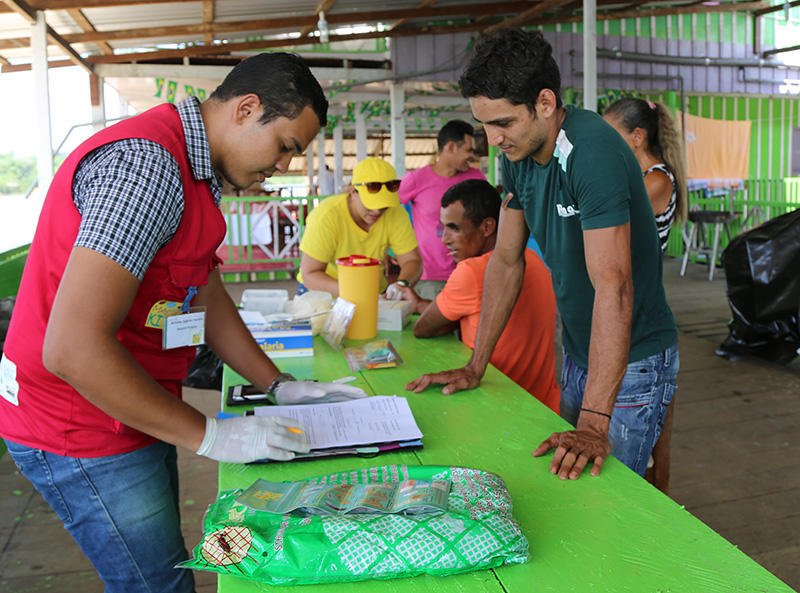New investment case in Guyana Shield highlights that malaria elimination in the region is possible, with benefits outweighing the costs
A newly released investment case for the Guyana Shield by the MEI, in collaboration with the Global Fund and the Ministries of Health for Guyana, Suriname, and French Guiana, provides evidence that a coordinated, regional, scaled-up approach to malaria elimination in the region would generate a net economic benefit of USD 80 million between 2021 and 2029.

A total of USD 49.6 million in current commitments to the malaria response in Guyana, Suriname, and French Guiana is expected between 2021-2024. With an additional total investment of USD 13.8 million over the next four years, a scaled-up malaria response across the entire region is projected to result in a 25% to 40% reduction in clinical cases, elimination of Plasmodium falciparum (Pf) malaria in Guyana by 2025, and elimination of all malaria species in Suriname by 2024 and in French Guiana by 2029.
After decades of progress in driving down the burden of malaria, the Guyana Shield –defined as Suriname, Guyana, French Guiana, Venezuela, and the Brazilian states of Amapá, Pará, and Roraima—has seen a 164% increase in malaria cases between 2015 and 2019, a surge that jeopardizes the region’s ability to reach the targets set forth in the PAHO Plan of Action for Malaria Elimination. Increases in cross-border migration amongst countries in the Guyana Shield—largely driven by economic activity in the region’s malaria endemic and resource-rich interior and political instability in Venezuela—have driven malaria transmission and importation in the region. There are varying levels endemicity across the Guyana Shield, and the interconnectedness of the region demonstrates that investment in and achievement of malaria elimination in any one country will likely remain dependent on progress made by the Guyana Shield region as a whole.
A coordinated, regional approach to malaria elimination is projected to be more impactful than isolated control or elimination efforts made by any one country. Increased investment and focus on technical regional coordination for malaria efforts, such as a regional surveillance system, will be required to target response efforts to mobile populations and get the region back on track for elimination. Establishment of a formal mechanism to facilitate coordination for malaria response amongst the countries of the Guyana Shield could drive improved targeting of malaria interventions. This in turn, would likely yield financial efficiencies and increase value for money. A coordinated regional effort would also bolster political and financial commitment to mitigate potential resurgence and to accelerate progress towards a malaria-free Guyana Shield.
According to the evidence generated by the investment case, an accelerated regional approach would require a total additional investment of approximately USD 3.5 million per year across national malaria responses in Suriname, Guyana, and French Guiana between 2021 and 2024. Every USD 1 invested in regional malaria response scale-up is estimated to result in USD 2.30 in economic benefit. In total, such investment would generate a net economic benefit of USD 80 million between 2021 and 2029. The estimated benefits are likely understated, as malaria elimination leads to other benefits not included in the economic analysis. Regional malaria elimination could yield greater economic benefits by bolstering other industries (e.g., tourism), strengthening health systems, and improving regional health security. Malaria investments in cross-cutting areas such as strengthened surveillance can build health system capacity to respond to other global health security threats, such as COVID-19.
The investment case describes potential pathways of progress towards malaria elimination between 2021 and 2030 in Guyana, Suriname, and French Guiana. The report details the approach to developing various scenarios, including the mix and scale of interventions for each, and model findings from these scenarios, including the projected rate of malaria transmission and costs associated with each.
For more information, check out the investment case and related resources: